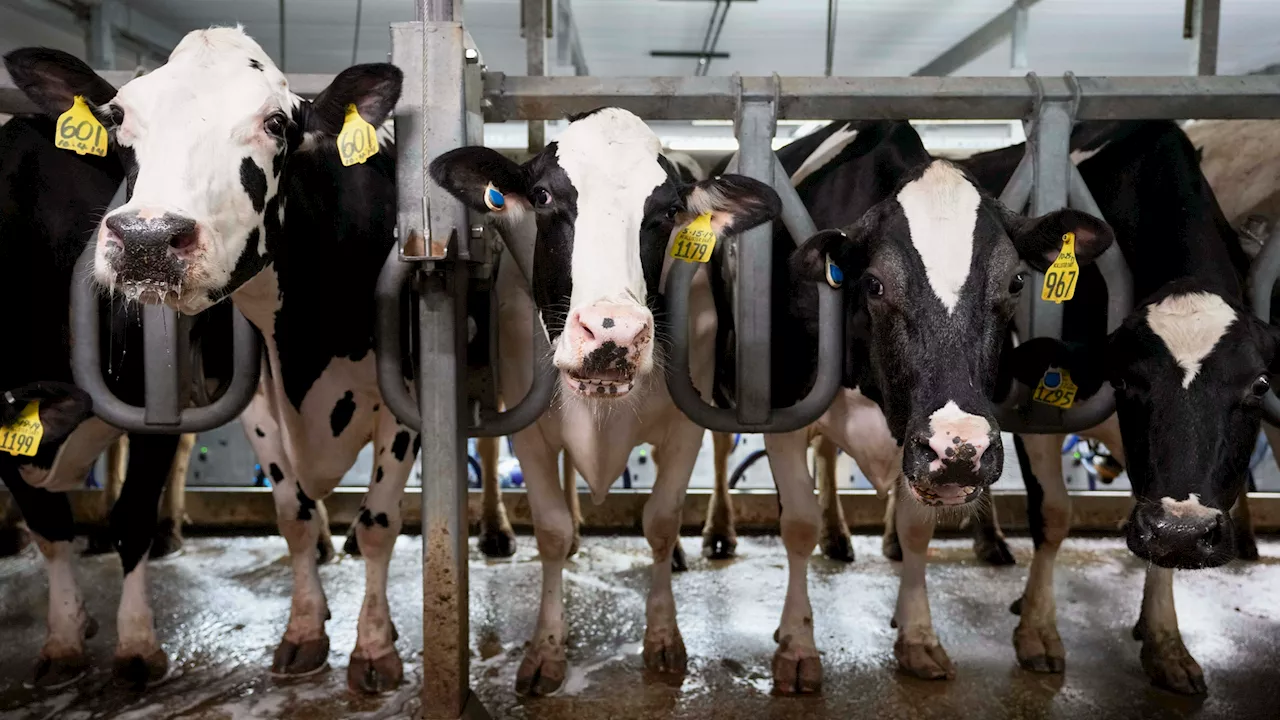The U.S. Department of Agriculture (USDA) has announced the detection of a new bird flu strain, D1.1, in dairy cows for the first time. This strain has previously only been found in wild birds and poultry, raising concerns about its potential impact on the dairy industry and human health.
A second type of bird flu has been found in U.S. dairy cows for the first time, the U.S. Department of Agriculture ( USDA ) announced. Until recently, all dairy herd detections in the U.S. had been infected with a form of bird flu, or avian influenza, known as B3.13. This version of bird flu, known as D1.1 , has only ever previously been detected in wild birds and poultry, indicating that it has now spilled over into cows.
The detection, found in dairy cattle in Nevada, was a result of the USDA's national milk testing program that launched in early December, according to the agency's Animal and Plant Health Inspection Service. 'USDA APHIS continues to work with the Nevada Department of Agriculture by conducting additional on-farm investigation, testing, and gathering additional epidemiological information to better understand this detection and limit further disease spread,' the agency said in a statement on its website. There has been a total of 957 confirmed cattle infections in 16 states, with 36 new infections in the last 30 days in California and Nevada, the latest USDA data shows. D1.1 has also been shown to potentially be dangerous to humans. Of the 67 human cases of bird flu detected in the U.S. beginning in April 2024, one of the only patients infected with D1.1 was in Louisiana. The Louisiana patient died earlier this year, although health officials said the patient was over age 65 and had underlying health conditions. Additionally, a 13-year-old girl in British Columbia, Canada, was admitted to the intensive care unit with the same strain in November. The Louisiana patient was exposed to a backyard flock and the British Columbia teenager had an unknown exposure. The CDC notes that the risk to the general public remains low and that there is no evidence of human-to-human spread.Late last year, the USDA issued a federal order that all raw milk samples nationwide be collected and shared with the agency in order to test for bird flu. The USDA order marked the start of the agency's National Milk Testing Strategy, a program intended to boost surveillance of the nation's milk supply and dairy herds and increase understanding of how bird flu is spreading. The USDA said the D1.1 detection in dairy cows 'does not change USDA's eradication strategy and is a testament to the strength of our National Milk Testing Strategy.' APHIS says it plans to publish a technical brief on the findings on its website and post the sequence data on an open-access data bank in the coming week. This is a developing story. Please check back for updates
BIRD FLU D1.1 DAIRY COWS USDA NEVADA HUMAN HEALTH NATIONAL MILK TESTING STRATEGY
United States Latest News, United States Headlines
Similar News:You can also read news stories similar to this one that we have collected from other news sources.
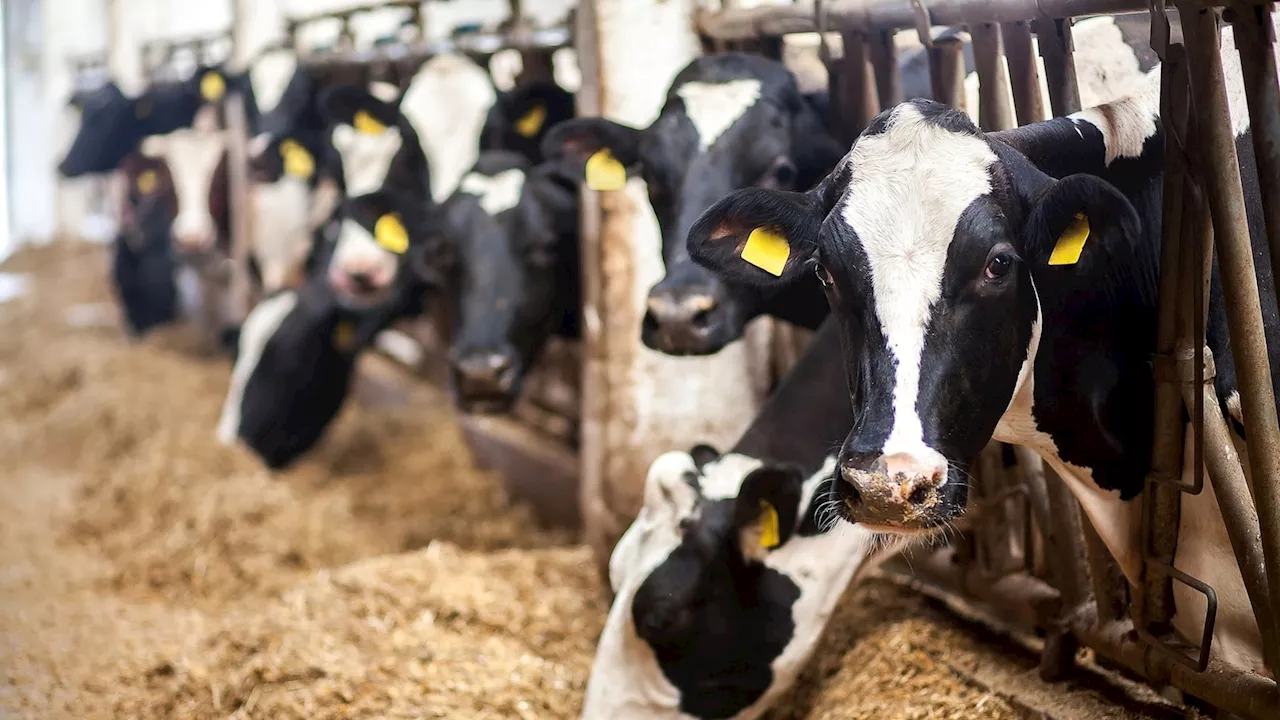 New Bird Flu Strain Detected in U.S. Dairy CowsA second strain of bird flu, D1.1, has been found in U.S. dairy cows for the first time, prompting concerns about its potential spread. The detection, made through the USDA's National Milk Testing Program, highlights the evolving nature of the avian influenza outbreak.
New Bird Flu Strain Detected in U.S. Dairy CowsA second strain of bird flu, D1.1, has been found in U.S. dairy cows for the first time, prompting concerns about its potential spread. The detection, made through the USDA's National Milk Testing Program, highlights the evolving nature of the avian influenza outbreak.
Read more »
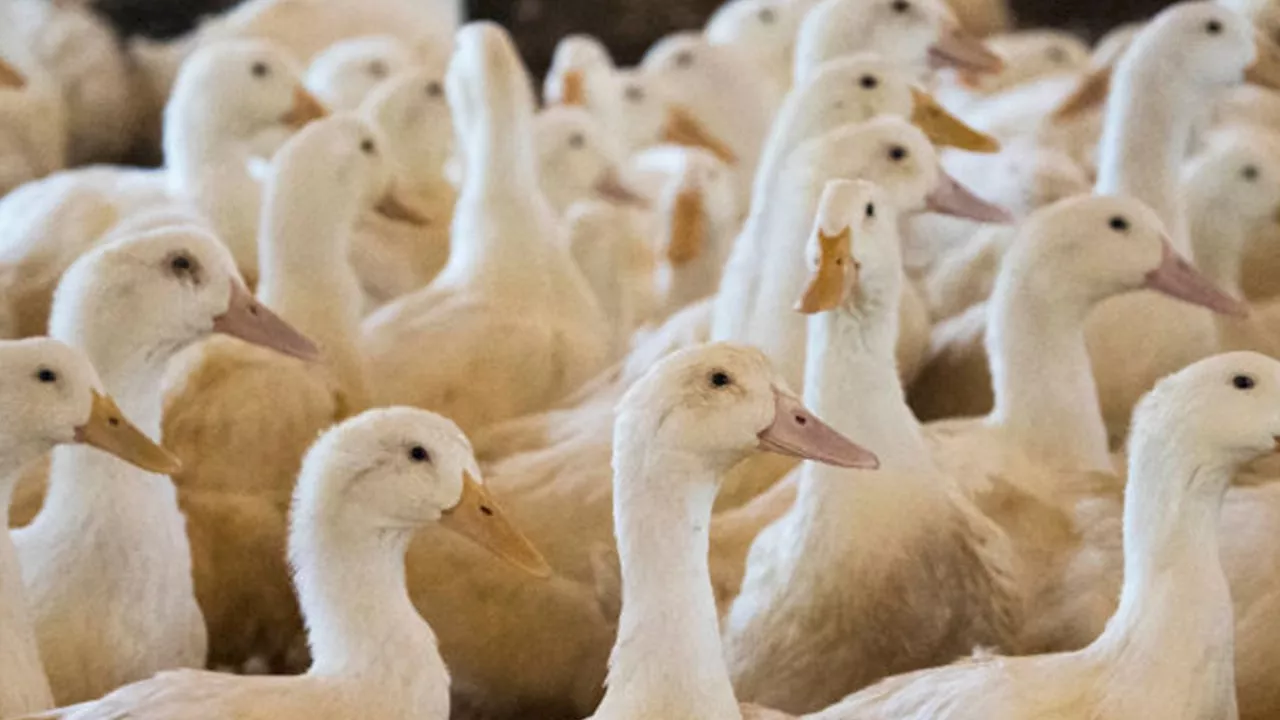 H5N9 bird flu outbreak: New virus strain detected on California farmThe H5N9 strain of avian influenza is much more rare than the H5N1 which has been responsible for most of the reported human cases and the first human death.
H5N9 bird flu outbreak: New virus strain detected on California farmThe H5N9 strain of avian influenza is much more rare than the H5N1 which has been responsible for most of the reported human cases and the first human death.
Read more »
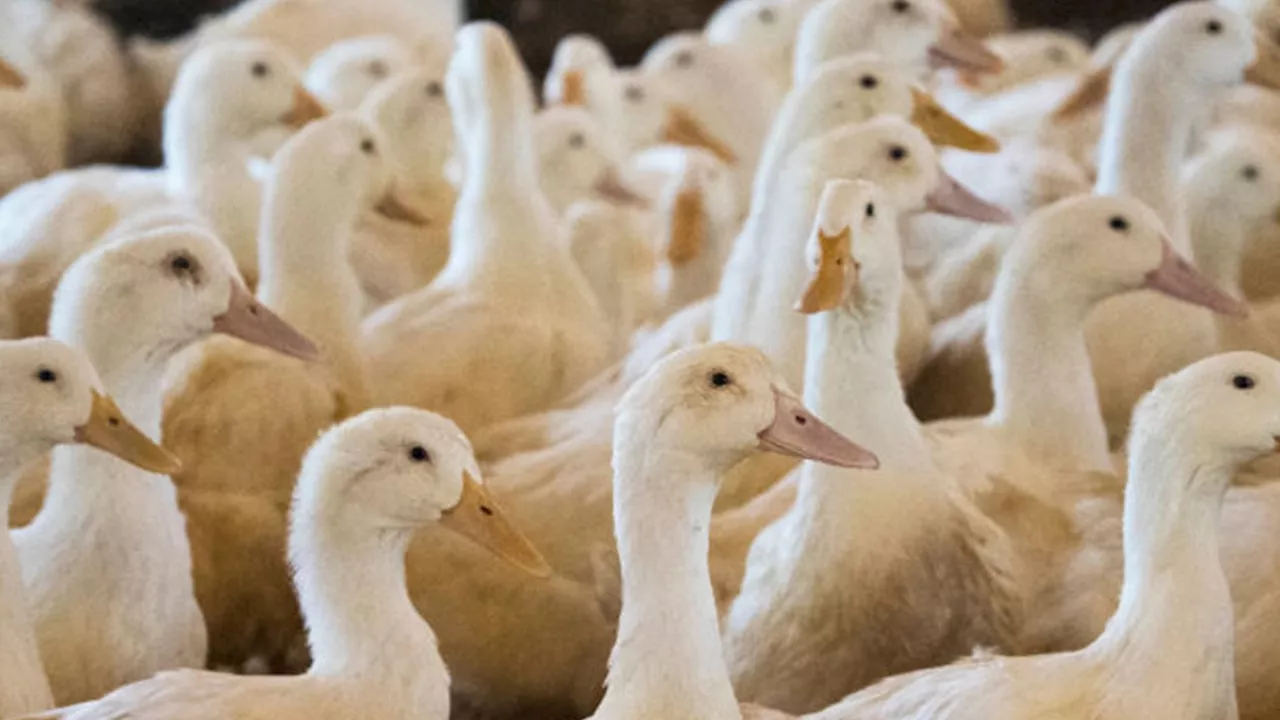 H5N9 bird flu outbreak: New virus strain detected on California duck farmA new strain of a highly pathogenic and rare strain of bird flu has been reported on a duck farm in central California.
H5N9 bird flu outbreak: New virus strain detected on California duck farmA new strain of a highly pathogenic and rare strain of bird flu has been reported on a duck farm in central California.
Read more »
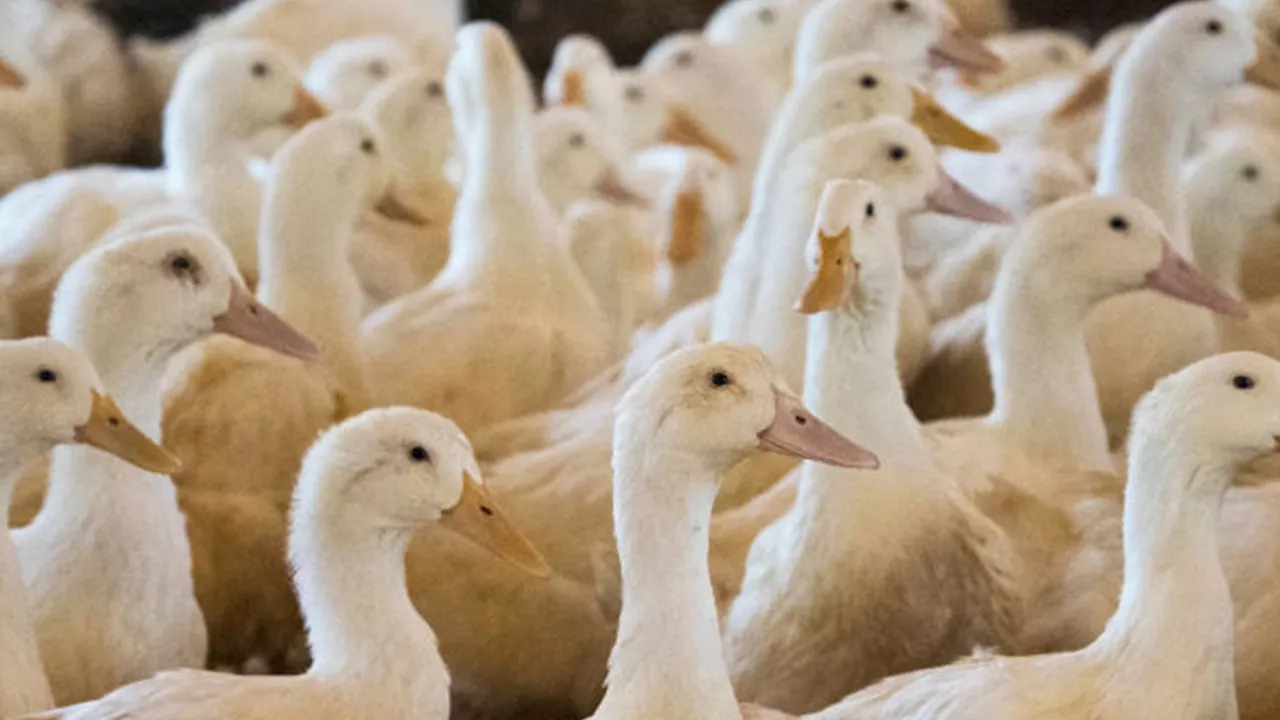 New, Rare Bird Flu Strain Detected in CaliforniaA highly pathogenic and rare strain of bird flu (H5N9) has been detected on a duck farm in Merced County, California, alongside a more common H5N1 strain. This marks the first confirmed case of HPAI H5N9 in poultry in the United States. As a result of the outbreak, over 118,000 birds were culled to prevent further spread.
New, Rare Bird Flu Strain Detected in CaliforniaA highly pathogenic and rare strain of bird flu (H5N9) has been detected on a duck farm in Merced County, California, alongside a more common H5N1 strain. This marks the first confirmed case of HPAI H5N9 in poultry in the United States. As a result of the outbreak, over 118,000 birds were culled to prevent further spread.
Read more »
 Bird Flu Concerns Rise as New Strain Detected in CaliforniaSenator Chuck Schumer visited Rochester, New York to address the growing concern over bird flu, particularly a new strain recently identified in California. Schumer emphasized the urgency of the situation, noting the continued impact on egg prices and the need for increased federal funding to combat the virus's spread. Schumer pledged to work with Congress in a bipartisan manner to secure additional resources for bird flu mitigation efforts.
Bird Flu Concerns Rise as New Strain Detected in CaliforniaSenator Chuck Schumer visited Rochester, New York to address the growing concern over bird flu, particularly a new strain recently identified in California. Schumer emphasized the urgency of the situation, noting the continued impact on egg prices and the need for increased federal funding to combat the virus's spread. Schumer pledged to work with Congress in a bipartisan manner to secure additional resources for bird flu mitigation efforts.
Read more »
 Bird Flu Outbreak Drives Up Egg Prices, Sparks Concerns Over New StrainA bird flu outbreak has caused a surge in egg prices, with shoppers in some areas paying more than double the average cost. The situation is exacerbated by the discovery of a new, worrying strain on a California duck farm. While officials are investigating the strain, the lack of communication from the Trump administration has raised concerns about potential delays in vital information. The outbreak has led to the culling of millions of chickens, causing a supply crunch that is expected to worsen as Easter approaches.
Bird Flu Outbreak Drives Up Egg Prices, Sparks Concerns Over New StrainA bird flu outbreak has caused a surge in egg prices, with shoppers in some areas paying more than double the average cost. The situation is exacerbated by the discovery of a new, worrying strain on a California duck farm. While officials are investigating the strain, the lack of communication from the Trump administration has raised concerns about potential delays in vital information. The outbreak has led to the culling of millions of chickens, causing a supply crunch that is expected to worsen as Easter approaches.
Read more »
